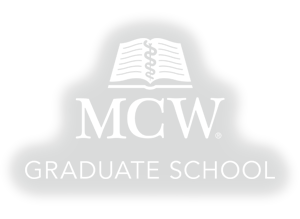
Biography
Year Entered MCW: 2015
Previous Education: BS, Biomolecular Engineering, Milwaukee School of Engineering
Research Interests
Structural Modeling
Through great effort, several groups have solved crystal structures of chemokine-bound receptors. To leverage this information to the benefit of the large chemokine family, I have developed a homology-based modeling protocol. These models are being used to guide and interpret ongoing structure-function studies, and are being applied in docking, in silico mutagenesis, and molecular dynamics experiments.
GPCR Signal Transduction
Chemokine receptors are a subset of class A GPCRs, however their binding partners are much larger than the small molecule or peptide ligands commonly seen in this subfamily. The extracellular interaction with the chemokine is dissimilar to these other ligands, yet downstream interactions are remarkably conserved. I am greatly interested in the mechanisms and microstates involved in converting chemokine binding into G protein activation, and I am investigating residue variance among chemokines at critical positions through mutagenesis and signaling assays.
Protein Engineering
Spatial and temporal control of chemokine signaling will be vital for any translational research involving cell migration. To aide in these studies and to define the molecular basis of chemokine selectivity, orthogonal chemokine tools are being developed through rational mutagenesis and protein chimeras.
Publications
(Wedemeyer MJ, Mueller BK, Bender BJ, Meiler J, Volkman BF.) Methods Cell Biol. 2019;149:289-314.
Heterogeneous stock rats: a model to study the genetics of despair-like behavior in adolescence.
(Holl K, He H, Wedemeyer M, Clopton L, Wert S, Meckes JK, Cheng R, Kastner A, Palmer AA, Redei EE, Solberg Woods LC.) Genes Brain Behav. 2018; 17(2):139-148
Design of artificial red blood cells using polymeric hydrogel microcapsules: hydrogel stability improvement and polymer selection.
(Zhang W, Bissen MJ, Savela ES, Clausen JN, Fredricks SJ, Guo X, Paquin ZR, Dohn RP, Pavelich IJ, Polovchak AL, Wedemeyer MJ, Shilling BE, Dufner EN, O'Donnell AC, Rubio G, Readnour LR, Brown TF, Lee JC, Kaltchev MG, Chen J, Tritt CS) Int J Artif Organs. 2016; 1;39(10):518-523.


